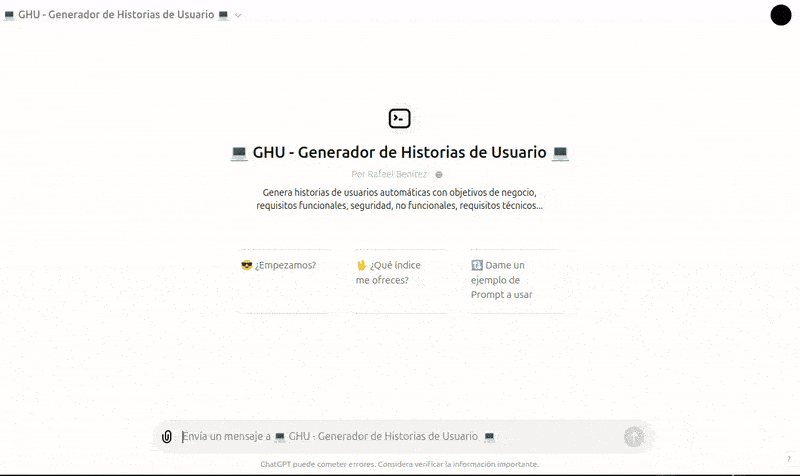 Spanish |
Spanish |
 English
English

Describe the main objective of the User Story, highlighting the business impact. This will help align the team with the real value being sought.
Break down the key functionalities, organized by software modules, providing clarity on how the system should behave in different scenarios.
Detail the security regulations and standards that must be met, such as ISO 27001, OWASP, or GDPR, ensuring data protection and system security.
Define performance, scalability, and usability requirements. This is essential to ensure that the system not only functions but is also efficient.
Specify what each role (administrators, users, etc.) can do, helping to clearly define access and permissions within the system.
Define key performance indicators to measure the system's success, allowing clear monitoring of performance and potential improvements.
Provide a list of URIs to interact with the system, detailing requests, responses, and parameters, ensuring clear integration with other systems.
Describe the possible paths users can take within the system, considering different types of users and alternate scenarios.
Suggest recommended design patterns and system architectures to ensure the system's scalability and flexibility.
Define key database variables and relationships, optimizing the structure to improve system performance.
Recommend plugins or external components that will enhance the system's functionality, such as payment gateways or real-time notifications.
A final summary that integrates technical and business aspects to provide a clear vision of the system's impact.
A checklist that will help you verify if the system meets all functional, security, and performance requirements before its final implementation.
Includes the necessary SQL code to implement the database. Specifies table names, variables, data types and lengths, as well as relationships between tables, primary and foreign keys. Possible optimizations are also detailed.
The Sprint structure includes the objectives to achieve, a detailed list of necessary technical requirements, and the specific tasks assigned to the team.
🔧 As an administrator, I need an inventory management system to add, edit, and delete products, control stock, and receive notifications when inventory is low. Users will be able to view products and place orders. The system must be secure, comply with regulations, and scalable to manage up to 10,000 products with 500 concurrent users.
📊 As a marketing coordinator, I need a user generator that allows uploading data from a CSV file to automate participation in Instagram giveaways. The system must validate that users meet the giveaway requirements, remove duplicates, and randomly select winners. Additionally, it should generate participation reports and ensure the transparency of the process.